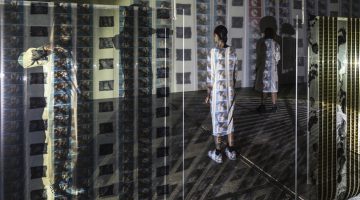A couple things lately have made me think of Richard Berger, not the least of which was seeing one of his sculptures from the 1970s in a gallery this week. Currently at Maccarone is a show of artist Carol Bove, including works by other artists important in her art cosmology. The story, as I now vaguely remember it, was that she had seen Berger’s “My Couch” (1976) as a child in Berkeley and approached him to restore it for this exhibition. It is a delight to see.
The other thing that made me think of Richard Berger was the terrible new film about Camille Claudel played by Juliette Binoche (don’t bother seeing it). I watched the 80s movie with Isabelle Adjani and Gerard Depardu in High School so I knew who Rodin and Claudel were, but Berger gave a lecture on them in his “History of Sculpture” class at SFAI that completely changed how I see those artists and sculpture in general. I specifically remember how he unpacked Claudel’s genius as a sculptor in a way that struck me as especially sensitive—the truly interesting parts of a figure like her often get lost in the drama. Last year when I went to Paris by myself the first thing I did was go to the Musée Rodin—and I was thinking of Richard Berger then too. Even after a few years in a doctoral program in art history I consider his sculpture history classes the most illuminating lectures on art I’ve heard.
“My Couch” (1976) is several hundred ball bearings suspended on wire from a grid. Placed at different heights, they describe the plush topography of a couch. In talks he’s described how genuinely delighted he was that people from the street would see it and say “couch”. Although it resolutely isn’t one—it has nothing in terms of use or material that would make it one—it remains undeniably recognized as a couch. The space between these two things—physical fact and psychological experience—became the focus of his work, often with explicitly metaphysical implications. In all his later sculpture Berger is interested in how things can be profoundly “missing” and yet be experienced as “complete”: how easy it is for us to see a few sticks as a puppet, able to articulate the entire scope of the what he would call “the human predicament.”
I had the chance to work with Berger on a show at Meridian Gallery in 2009 that included several of his kinetic works. My favorite was called “All I didn’t say to Charlie last I saw him…” and I think about it too, all the time. It has three lines of text on the outer edges of three clear plexiglas discs that turn on little motors. They are affixed to a large heart shaped piece of plexiglas, underneath which is a heart-shaped wreath of lightbulbs. Out front is a thin metal arm with a single bulb, shielded so it only shines on the sculpture, creating gentle shadows from each piece of transparent plastic; the shadow-text marching in overlapping arcs on the wall behind. The bulbs that make up the wreath are the campy kind that mimic flickering candlelight. There is something about the silly orange wiggling of their electric light—an overdetermined and sentimental effect in normal life—that in the context of this delicate contraption becomes poignant. In the face of our sheer inability to express certain type of emotions, the naked lack of these fake fires become flooded with inexplicable and authentic pathos. The text is what Berger wishes he had said to a dying student the last time he passed him in the hall. This sculpture is the essence of what I admire about his work—like the relationship of the ball-bearing to the couch—there is nothing really “human” here, just plastic and motors and novelty lights, but I still think of it as one of the most tender and human artworks I know.
I think we don’t share our admiration or appreciation enough with the people we are lucky to know, so I just wanted to use this as a way of saying: Richard Berger—Thank You.
— Contributed by Jarrett Earnest





